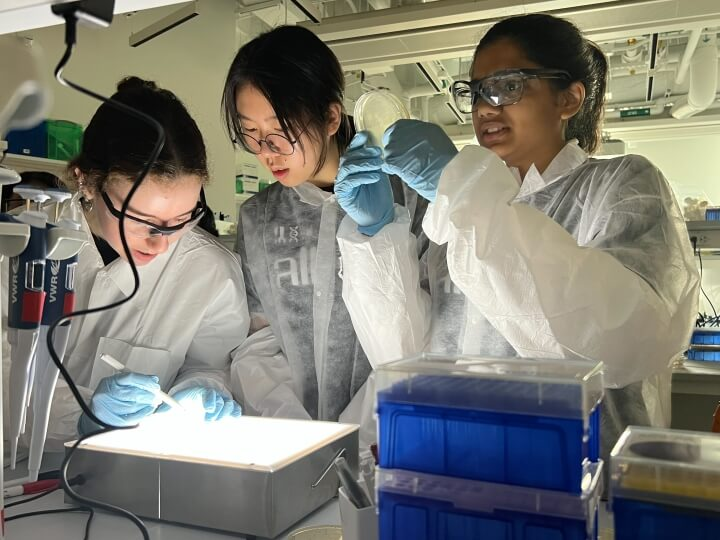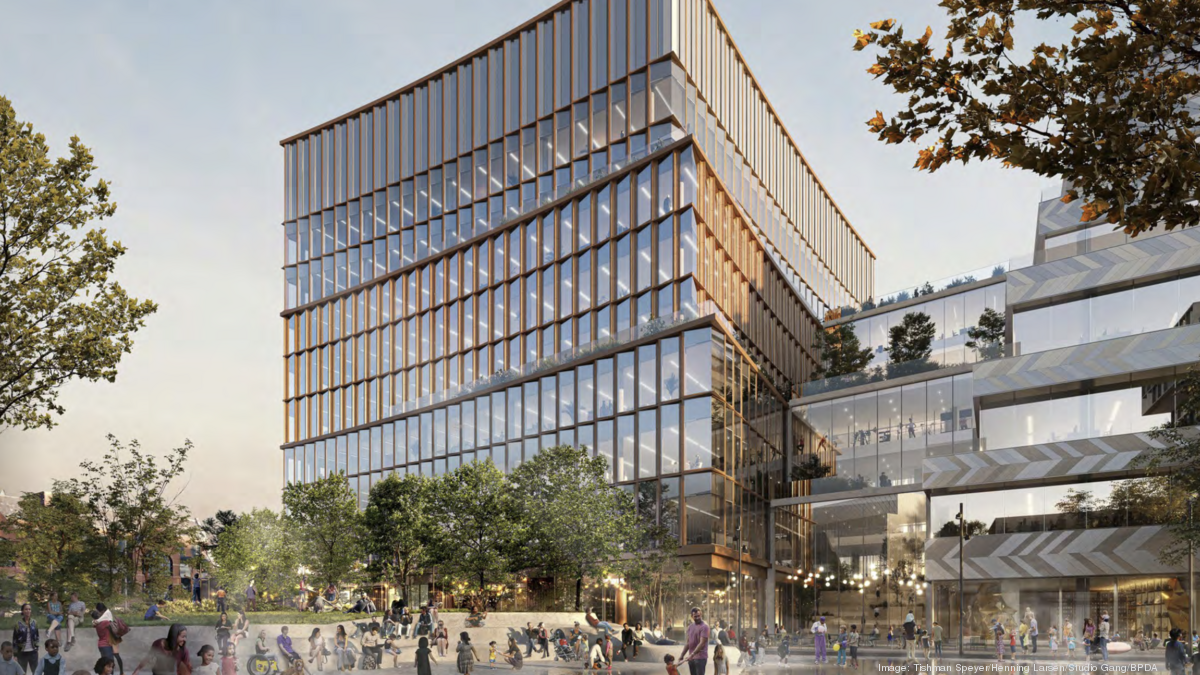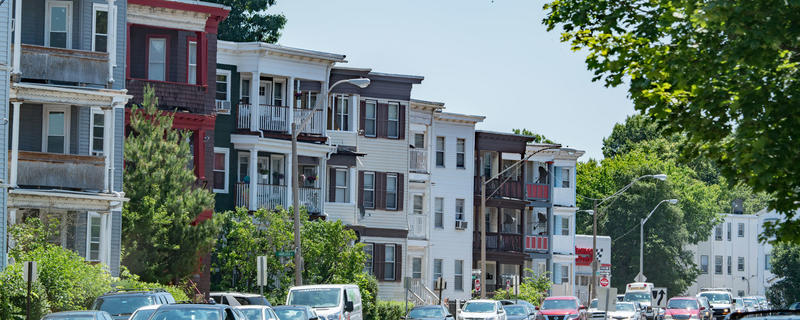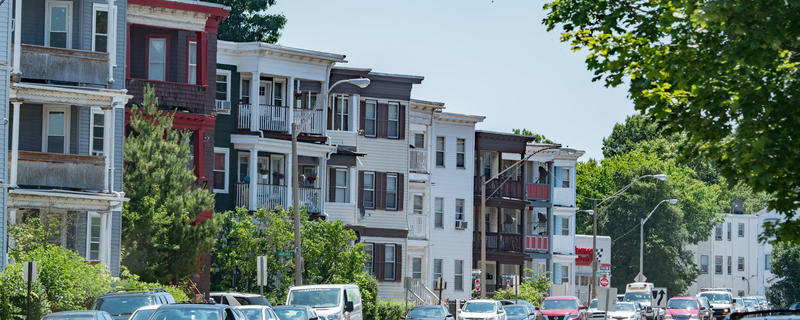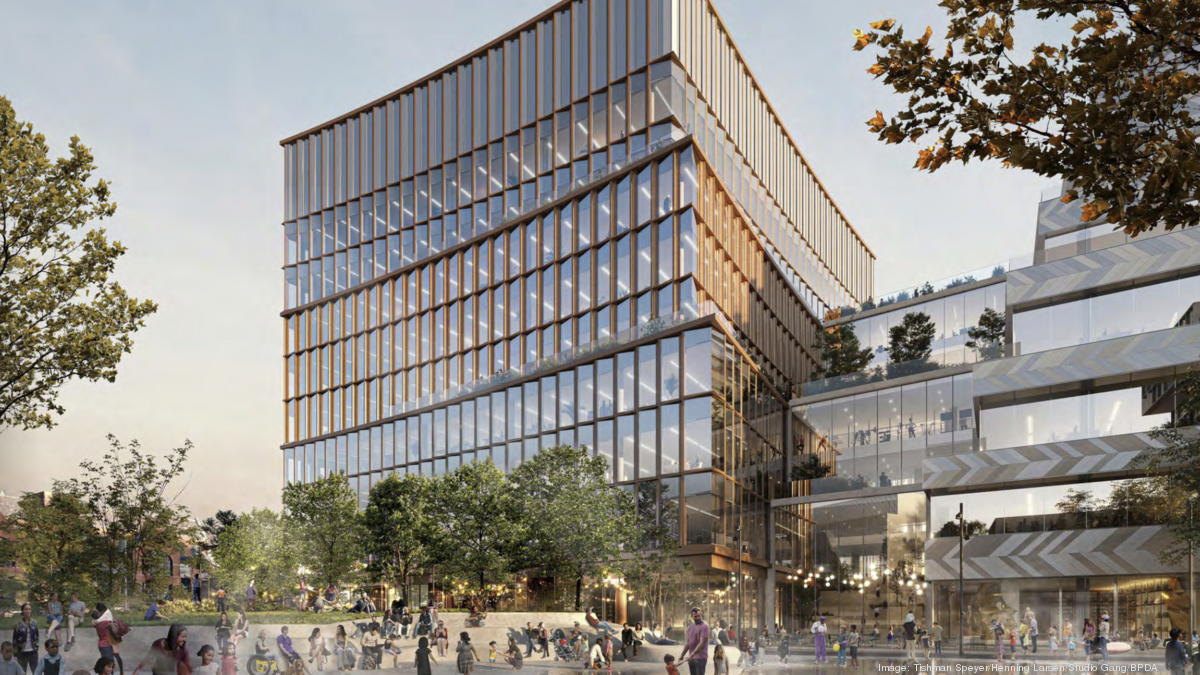
The Harvard Allston Enterprise Research Campus (ERC) marks a transformative moment for Boston’s Allston neighborhood, being a pioneering nine-acre mixed-use development that promises to blend innovation with community engagement. This ambitious project, celebrated in a recent groundbreaking ceremony, is set to redefine collaborative spaces by incorporating a mix of laboratory buildings, a residential apartment complex, and a public outdoor area. It stands as a testament to the commitment of Harvard and local leaders, including the Harvard Allston Task Force and the Boston planning agency development team, to create environments that foster creativity and opportunity. With a goal to provide 25% affordable housing Boston units within this new landscape, the ERC aims to address pressing community needs while also supporting the wider Harvard innovation corridor. Together, these developments not only strengthen Harvard’s ties to the community but also enhance the vibrancy and accessibility of the Allston area for everyone.
Located in the heart of Allston, the Harvard Allston Enterprise Research Campus embodies a visionary approach to urban development, integrating facilities for research, housing, and public spaces for the community. This mixed-use initiative illustrates Harvard’s strategic plan, emphasizing collaboration between educational institutions and local residents to cultivate an inclusive environment. By prioritizing affordable housing and community engagement, the ERC aligns with the objectives of the Harvard Allston Task Force and Boston’s planning expectations. The project signifies a new chapter in the Harvard innovation corridor, fostering innovative synergies and partnerships that will benefit both the city and its inhabitants. Altogether, this initiative reflects a holistic development strategy aimed at enhancing quality of life while propelling Boston into a future of inclusive growth.
The Significance of Harvard Allston Enterprise Research Campus
The Harvard Allston Enterprise Research Campus (ERC) is more than just a mixed-use development. It is a transformative project that intertwines the future of innovation with the cultural fabric of Allston. Spanning nine acres, the ERC is strategically located near key educational institutions such as Harvard Business School and the Science and Engineering Complex. This proximity not only enhances collaboration opportunities among students, scholars, and industry leaders but also cements Allston’s position as a burgeoning innovation hub in Boston. Through its state-of-the-art laboratory spaces and community-oriented amenities, the ERC is set to stimulate economic growth while fostering academic partnerships and research advancements.
Moreover, the ERC is poised to realize the vision of a thriving mixed-use community that reflects the collaborative spirit of Boston. Key stakeholders, including the Harvard Allston Task Force and the Boston Planning and Development Agency, have prioritized the integration of affordable housing and public spaces within the development. This commitment aligns with the broader goals of creating inclusive growth in Boston, where diverse communities have access to vital resources and opportunities. As Harvard President Claudine Gay highlighted, the ERC is not merely a construction project; it represents a shared vision that seeks to benefit all residents of Allston.
Combined Efforts of Local Leaders in Allston Development
The groundbreaking ceremony for the Harvard Allston ERC illustrated the collaborative spirit among Boston’s local leaders and institutions. Figures such as City Councilor Ruthzee Louijeune and Boston Mayor Michelle Wu emphasized the importance of partnership in urban development. Such collaborations encourage transparency and engagement with the community, paving the way for projects that genuinely reflect the needs and aspirations of local residents. The manifestation of dedication from these leaders underlines the belief that effective development is rooted in active participation and openness.
Additionally, the support from community representatives like Anthony D’Isidoro from the Allston Civic Association showcased the foundation of trust that has been cultivated through extensive dialogue. By actively involving community members in the planning process, the ERC project ensures that the new mixed-use spaces will cater meaningfully to the needs of Allston residents. This inclusive approach is crucial, particularly in Boston, where issues of affordable housing and urban equity remain prominent. Through cooperation with various stakeholders, the ERC aims to redefine the landscape of Allston by emphasizing both innovation and community well-being.
Affordable Housing Initiatives Within the ERC Project
One of the standout features of the Harvard Allston ERC project is its commitment to affordable housing. With 25% of the residential units designated as affordable, this initiative represents a significant milestone in Boston’s mixed-use developments. The dedication to creating affordable living options demonstrates a strong response to the city’s pressing housing crisis. These units will not only support local residents but also contribute to a diverse community, aligning with Harvard’s vision of fostering an inclusive environment for all.
The impact of affordable housing can extend well beyond providing shelter; it can enhance community cohesion and stimulate local economies. By integrating affordable options into the ERC, Harvard and its partners are prioritizing the creation of a balanced demographic within the development. This strategic approach acknowledges the essential need for accessibility in urban growth, helping to alleviate some of the barriers that marginalized groups face in the Boston area. As noted by local leaders, the ERC stands as a promising model in the ongoing conversation around affordable housing in Boston.
The Future of Boston’s Innovation Corridor
The development of the Harvard Allston ERC is not just about physical infrastructure; it’s about establishing a thriving innovation corridor that will catalyze economic opportunities for the city. This corridor, envisioned by leaders such as Mayor Wu and President Gay, aims to connect Harvard’s extensive resources with local startup ecosystems and traditional businesses. By bringing together academic, corporate, and entrepreneurial communities, the ERC serves as a launchpad for collaborative research and innovation, positioning Boston as a leader in sustainable and technological advancements.
Furthermore, the innovation corridor’s success is inherently tied to the accessibility and inclusiveness it promises to uphold. The deliberate integration of public spaces within the ERC emphasizes a long-term vision of community engagement, where innovation is not confined to elite institutions but accessible to all. By invigorating Allston with strategic investments in technology and sustainability, the ERC is poised to attract talent, create jobs, and ultimately contribute to Boston’s economic resilience. This forward-thinking approach signifies an exciting chapter for both the community and the city at large.
The Role of Tishman Speyer in Allston’s Development
Tishman Speyer, a renowned development firm, has been instrumental in shaping the Harvard Allston ERC. With a legacy that includes iconic projects like Rockefeller Center, Tishman Speyer brings a wealth of experience in creating engaging and sustainable mixed-use environments. Their approach to the ERC combines innovative design principles with a strong commitment to community inclusivity, representing a progressive shift in real estate development. The firm’s leadership under CEO Rob Speyer highlights the importance of collaboration and creativity as cornerstones of great development.
As Tishman Speyer engages with local stakeholders, they aim to set a precedent for community-oriented development practices. The company’s involvement in forming one of the largest inclusionary investor initiatives in Boston history reflects a profound commitment to social equity. By empowering local Black and Hispanic households to participate in ownership, Tishman Speyer is redefining wealth and opportunity in Allston. As the ERC progresses, their efforts will serve as a model for future projects throughout Boston, ensuring that urban development aligns with the principles of equity and community empowerment.
Strengthening Community through Open Spaces
Open spaces are a crucial component of the Harvard Allston ERC, designed to foster community interaction and a connection to nature. Over two acres of public outdoor areas will be integrated into the development, providing residents and visitors alike with essential recreational opportunities. These spaces will not only serve as venues for gatherings and events but also enhance the aesthetic appeal of Allston. As the community becomes more engaged with the open environment, it will promote social cohesion and well-being.
The intention behind creating accessible public spaces is to encourage diverse use and foster an inclusive culture within Allston. These areas will allow for outdoor activities, community programs, and public art, ultimately contributing to a vibrant community atmosphere. As articulated by President Claudine Gay, the ERC aims to celebrate Allston as a place for all, reinforcing the concept that urban spaces should be welcoming and conducive to both relaxation and engagement. By prioritizing green and open areas, the ERC positions itself as a progressive development aligned with the needs and desires of Allston’s residents.
Community Engagement: A Cornerstone of Development
Community engagement played a pivotal role in shaping the vision for the Harvard Allston ERC. Prior to the project’s approval, an extensive consultation process was undertaken, allowing local residents to voice their ideas and concerns. This emphasis on engagement ensures that the development will not only serve economic interests but will also respond to the unique character and needs of the Allston community. Engaging stakeholders early in the planning process fosters trust, a vital component for successful and sustainable urban development.
By inviting participation from the Harvard Allston Task Force and various community organizations, the developers have taken proactive steps towards inclusivity. Local leaders, including Councilor Liz Breadon and Rep. Michael Moran, have been integral in facilitating these dialogues, showcasing a collective commitment to transparency and collaboration. Moving forward, the feedback gathered during this process will be instrumental in guiding decisions regarding amenities and services essential for enriching community life within the ERC.
Harnessing Collaboration for Economic Growth in Allston
The collaboration between Harvard University, the Boston city officials, and investment firms like Tishman Speyer exemplifies a concerted effort to promote economic growth in Allston. By merging educational resources with innovative development practices, stakeholders aim to enhance entrepreneurial opportunities and attract startups to the area. This synergy is designed to create a vibrant economic landscape where businesses can thrive amidst a supportive community structure, effectively contributing to Boston’s overall economic vitality.
As highlighted during the groundbreaking ceremony, the commitment to local workforce development is paramount. By prioritizing workforce opportunities in the ERC, leaders emphasize the importance of equipping residents with the skills needed for success in a rapidly evolving economy. As the Harvard innovation corridor expands, it serves as a leading example of how collaboration can yield tangible benefits for local communities while simultaneously addressing regional challenges such as housing equity and economic disparity.
Frequently Asked Questions
What is the Harvard Allston Enterprise Research Campus (ERC)?
The Harvard Allston Enterprise Research Campus (ERC) is a nine-acre mixed-use development in Allston that aims to foster innovation and collaboration among academic institutions and industry partners. It will feature laboratory buildings, a residential apartment complex, a hotel, public outdoor spaces, and a university-wide conference center.
How does the Harvard Allston Task Force contribute to the ERC project?
The Harvard Allston Task Force plays a crucial role in guiding the development of the ERC, ensuring that the project aligns with the community’s needs and values. They participate in extensive community engagement processes and help to maximize benefits such as affordable housing and public spaces.
What are the affordable housing initiatives associated with the Harvard Allston ERC?
The Harvard Allston Enterprise Research Campus is set to include residential units with 25% designated as affordable housing, marking the highest percentage for a market project in Boston. This commitment aims to address the need for affordable housing within the Boston area.
Who are the key stakeholders involved in the Harvard Allston ERC development?
Key stakeholders in the Harvard Allston Enterprise Research Campus development include Harvard University leadership, the Boston Planning and Development Agency, the Allston Civic Association, and the developer Tishman Speyer, among others. These parties collaborate to ensure a successful project that benefits the local community.
What features will the ERC provide to the Allston community?
The ERC will provide several community-oriented features, including two laboratory buildings, 343 rental apartments, a hotel, a conference center, and over two acres of public outdoor space. These developments aim to create a vibrant hub for innovation while supporting the local community.
How does the mixed-use development in Allston align with Boston’s planning goals?
The mixed-use development at the Harvard Allston Enterprise Research Campus aligns with Boston’s planning goals by fostering collaboration, innovation, and community engagement. The project prioritizes affordable housing, open spaces, and workforce opportunities, reflecting a commitment to a balanced and inclusive urban environment.
What is the significance of the David Rubenstein Tree House in the ERC?
The David Rubenstein Tree House is the first university-wide conference center included in the Harvard Allston Enterprise Research Campus. It aims to facilitate collaboration among industry partners, visiting scholars, and Harvard faculty and students, enhancing the innovation corridor’s role in fostering partnerships.
How will the Harvard innovation corridor benefit the community?
The Harvard innovation corridor, which includes the Allston Enterprise Research Campus, is designed to create job opportunities, promote economic growth, and enhance collaboration between academia and industry. It aims to provide resources and spaces that benefit both residents and businesses in the Boston area.
What are the sustainability initiatives included in the Harvard Allston ERC?
Sustainability is a key focus in the Harvard Allston Enterprise Research Campus, with Tishman Speyer leading efforts to create environmentally friendly architecture and healthy live-work environments. The development will implement sustainable design and construction practices to minimize its ecological footprint.
When was the groundbreaking ceremony for the Harvard Allston ERC, and who attended?
The groundbreaking ceremony for the Harvard Allston Enterprise Research Campus took place on November 1, 2023. It was attended by influential leaders, including Boston Mayor Michelle Wu, Harvard President Claudine Gay, members of the Harvard Allston Task Force, and representatives from the Boston planning agency.
| Key Figures | Project Details | Community Impact |
|---|---|---|
| Michelle Wu (Boston Mayor) | Mixed-use development (ERC) across 9 acres | 25% of residential units designated as affordable housing |
| Claudine Gay (Harvard President) | Includes laboratory buildings, hotel, and conference center | Focus on workforce opportunities and community spaces |
| Rob Speyer (Tishman Speyer CEO) | Location along Western Avenue, near key facilities | Engagement with community stakeholders |
| Anthony D’Isidoro (Allston Civic Association) | Designed to foster innovation and collaboration | Creating a vibrant space for all residents |
Summary
The Harvard Allston Enterprise Research Campus represents a significant step forward in community collaboration, innovation, and sustainable development. This initiative not only establishes a new mixed-use space in Allston but also emphasizes inclusivity by prioritizing affordable housing and community-oriented facilities. As leaders from both Harvard and the city of Boston come together in this groundbreaking project, it highlights their long-standing partnership and commitment to enhancing the neighborhood for future generations.
